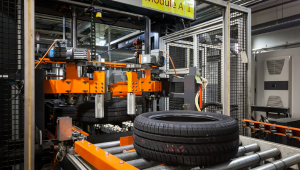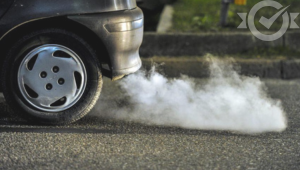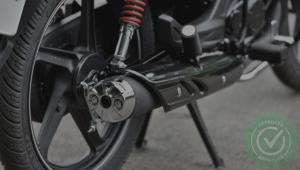Program Overview
As tyre performance demands intensify—driven by safety, sustainability, and electrification—the mastery of compounding and material science has become a defining competitive edge. This program delves deep into the chemistry, physics, and process engineering behind rubber formulation, exploring how advanced fillers, polymers, and nano-materials influence grip, wear, rolling resistance, and life cycle impact. Through a blend of theory, case insights, and practical simulations, participants learn to optimize compounding parameters, integrate green materials, and troubleshoot production challenges, ultimately transforming raw chemistry into performance-ready rubber solutions that meet tomorrow’s regulatory and market expectations.
Features
- Understand the chemical, mechanical, and processing principles of tyre rubber compounding
- Evaluate the impact of fillers, polymers, and additives on tyre performance metrics
- Integrate sustainable and bio-based materials into modern compound design
- Diagnose and solve compounding or vulcanization defects using data-driven methods
Target audiences
- Rubber Technologists
- Quality and Lab Testing Teams
- Product Development Specialists
- R&D Professionals
- Process & Mixing Engineers
Curriculum
- 5 Sections
- 37 Lessons
- 1 Day
Expand all sectionsCollapse all sections
- Rubber Compounding Fundamentals – The Science Behind Performance6
- 1.1Polymer science overview – Natural vs. Synthetic rubber (NR, SBR, BR, NBR, EPDM)
- 1.2Role of fillers, plasticizers, curatives, and antioxidants
- 1.3Rheology, cross-link density, and viscoelastic behavior
- 1.4The “Magic Triangle” of tyre performance – Rolling Resistance, Wet Grip, and Wear
- 1.5Mixing kinetics, dispersion control, and curing chemistry fundamentals
- 1.6Interactive Element: Compound composition – participants design a basic tread compound balancing grip vs. wear
- Advanced Fillers, Reinforcements & Functional Additives8
- 2.1Silica–Silane Systems: Replacing carbon black to enhance fuel efficiency and wet grip
- 2.2Graphene & Nanomaterials: Improving tensile strength, abrasion resistance, and hysteresis control
- 2.3Reinforcement Dispersion: Optimizing mixing energy, rotor speed, and temperature profiles
- 2.4Coupling Agents & Compatibilizers: Silane and adhesion promoter chemistry
- 2.5Bio-based Fillers: Lignin, rice-husk ash, cellulose nanofibers for sustainable formulation
- 2.6Functional Oils: Transition from TDAE to bio-oils and REACH-compliant plasticizers
- 2.7Industry Examples: Bridgestone’s ENLITEN light-weight compound platform; Continental’s ContiGreen Concept material innovations
- 2.8Exercise: Interpret viscoelastic and DMA data to evaluate filler dispersion efficiency and its performance correlation
- Mixing, Vulcanization & Process Control7
- 3.1Banbury mixing optimization – fill factor, rotor design, and temperature control
- 3.2Process analytics – torque and dump curve interpretation for batch reproducibility
- 3.3Batch vs. continuous mixing systems – evaluating trade-offs
- 3.4Vulcanization science – sulfur systems, accelerators (CBS, TBBS, DPG), and activators (ZnO, stearic acid)
- 3.5Cure modeling through rheometer data and Arrhenius kinetics
- 3.6AI-driven process monitoring and Industry 4.0 integration in mixing rooms
- 3.7Interactive Element: “Troubleshoot the Mix” – analyze torque–temperature data to identify dispersion or scorch issues
- Designing for Performance & Sustainability8
- 4.1Balancing trade-offs: Grip vs. rolling resistance vs. wear vs. noise
- 4.2Green compound formulation – bio-fillers, recycled rubber, non-petroleum oils
- 4.3Devulcanized rubber (DVR) and recovered carbon black (rCB) integration
- 4.4Lightweighting compounds for energy efficiency
- 4.5Sustainable sourcing standards – ISCC+, RSPO, ASTM D6400 compliance
- 4.6Testing correlation: Rheometer, DMA, abrasion, rebound, and heat build-up analysis
- 4.7Case Insight: Michelin’s “Uptis” airless tyre and Goodyear’s soybean oil-based tread innovation
- 4.8Activity: redesign a tread compound using 25% sustainable raw material without compromising performance targets
- Defect Analysis, Quality & Problem-Solving in Compounding8
- 5.1Common issues: under-curing, scorch, porosity, migration, blooming
- 5.2Statistical process control (SPC), Cp/Cpk, and process capability analysis
- 5.3Correlating lab test results with field performance
- 5.4DOE (Design of Experiments) and regression models for compound optimization
- 5.5Analyze case data on inconsistent hardness and suggest process or formulation changes
- 5.6Activity: Compound of the Future – teams design a next-generation tread compound integrating sustainability, cost efficiency, and performance
- 5.7Targeted property matrix (e.g., wear index, RR, wet grip)
- 5.8Key improvement levers for process and material design







